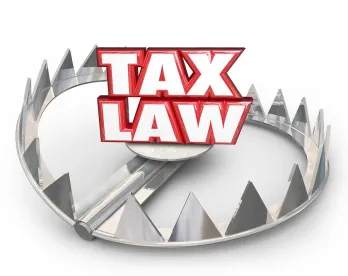The Tax Cuts and Jobs Act (TCJA) eliminates the earnings stripping rules, which generally applied to certain thinly-capitalized U.S. corporations paying interest to foreign affiliates. In their place, the TCJA imposes a broader limitation on the deductibility of interest that potentially applies to all borrowers, whether structured as corporations or partnerships (the Interest Limitation). For each year, a taxpayer’s Interest Limitation is equal to the sum of (A) the taxpayer’s business interest income for the year, plus (B) 30% of the taxpayer’s adjusted taxable income (ATI) for the year. The calculation of ATI will be similar to EBITDA until the end of 2021, when ATI will be reduced by deductions for depreciation, amortization and depletion. Interest expense in excess of the Interest Limitation may be carried forward indefinitely. Other limitations on interest deductibility under prior law, including the applicable high yield discount obligation (AHYDO) rules, remain in effect and will be applied prior to the Interest Limitation.
The application of the Interest Limitation to partnerships, including MLPs, is complex. The Interest Limitation for partnerships is first determined at the entity level, with interest expense in excess of the Interest Limitation allocated among the partners rather than carried forward by the entity itself. Disallowed interest expense then is suspended at the partner level until, in a later year, a partner is allocated excess taxable income from the same partnership. Disallowed interest expense reduces a partner’s basis in its partnership equity, but any amount that is unutilized is restored to the partner’s basis immediately before the ultimate sale or other taxable disposition of the equity.
The TCJA does not include a grandfathering rule to carve out pre-TCJA debt obligations from the scope of the Interest Limitation. As a result, many taxpayers in the energy industry will find that existing debt financing suddenly has a higher after-tax cost. We expect these taxpayers to seek to reduce their cost of capital, for example, by pursuing shorter-term financing or offering enhanced security or convertibility to lenders. Going forward, taxpayers seeking leveraged acquisitions may be focused on alternative means of financing in order to generate more value from the investment and, depending on the nature of the asset, to protect cash flow. For example, oil and gas businesses operated as partnerships may explore opportunities for preferred equity financing, which would reduce taxable income allocated to the common holders to the extent of the preferred coupon. From the perspective of the common holders, this should have a practical impact similar to an interest deduction but without the burden of the Interest Limitation.
Taxpayers in the energy industry with substantial depreciable property, such as midstream oil and gas businesses, may experience another increase in the after-tax cost of their debt financing when depreciation, amortization and depletion are added back to the calculation of ATI after 2022. Starting in 2023, these taxpayers may be motivated to elect out of the new bonus depreciation regime and into the modified accelerated cost recovery system (MACRS) in order to generate a more consistent stream of ATI and, as a result, a more predictable Interest Limitation each year. Electing out of bonus depreciation, however, may not mitigate the long-term impact of the Interest Limitation. Any amount of depreciation deduction under MACRS inevitably will push down the Interest Limitation, and any increased capital investment in depreciable property therefore will make borrowing more expensive, with a potential chilling effect on further investment.
Regulated gas and power businesses are not subject to the Interest Limitation. However, the TJCA does not specify how gas and power businesses that are partially regulated and partially unregulated should apply the Interest Limitation. For instance, a company group operating both regulated and merchant power businesses at the subsidiary level, with bank debt at the holding company level, currently has no guidance for allocating the Interest Limitation among the various entities, particularly if they have shared assets. Moreover, from a planning perspective, such a group has no way of knowing whether to expect a different result if the bank debt were owed at the subsidiary level rather than the holding level, or whether choice of entity for the subsidiary businesses would impact the calculation of the Interest Limitation. Representatives from the IRS and Treasury have suggested that guidance for the Interest Limitation is a top priority, but have been unable to commit to a projected date for its release.




 />i
/>i

